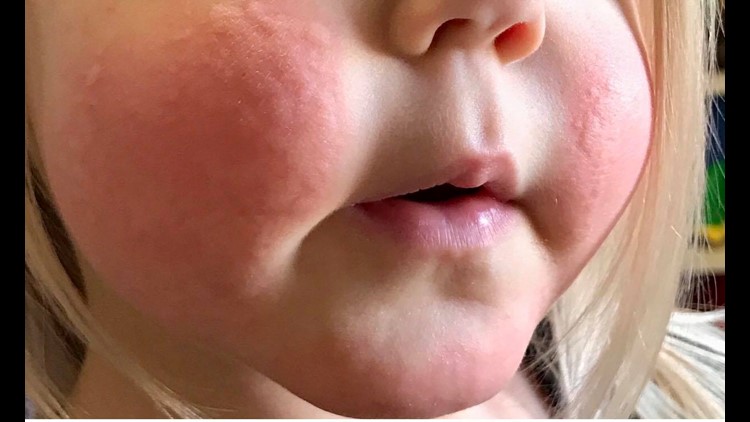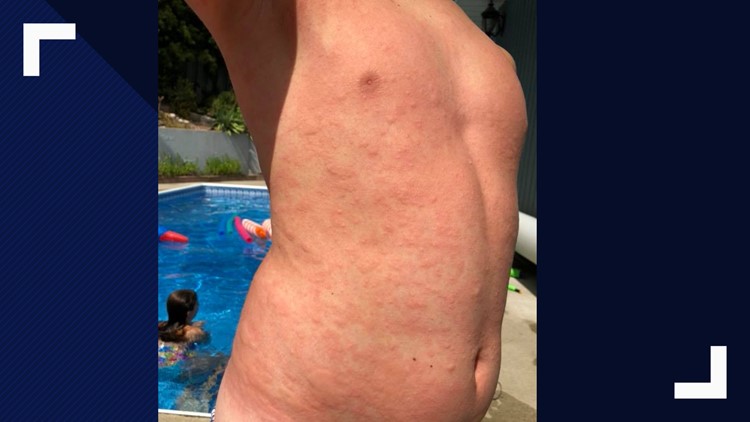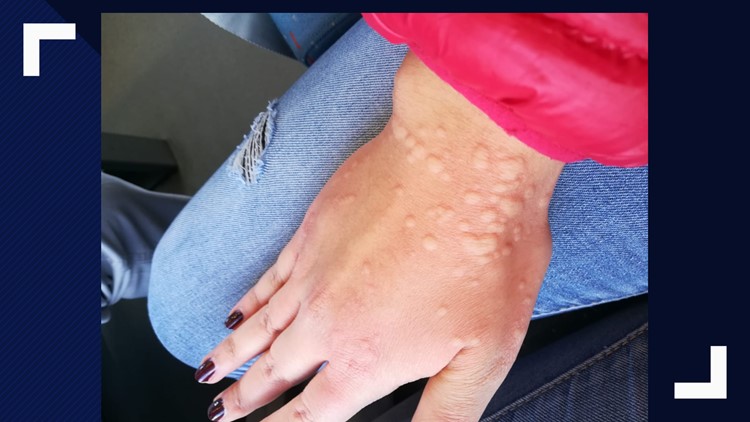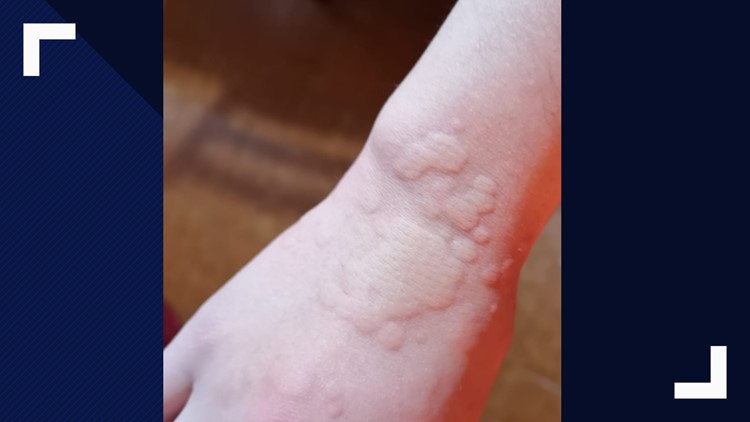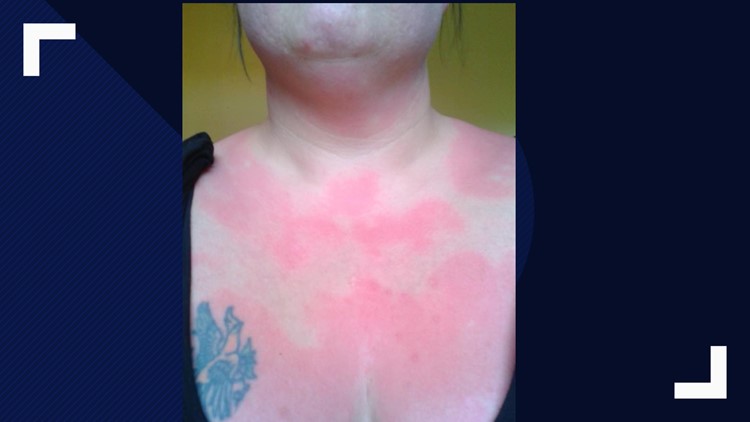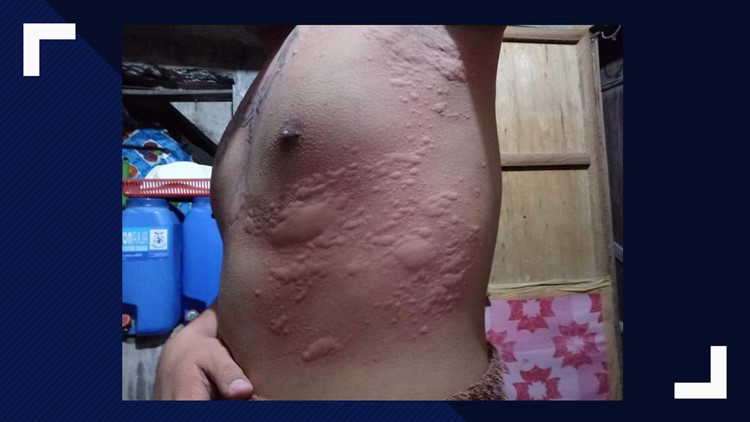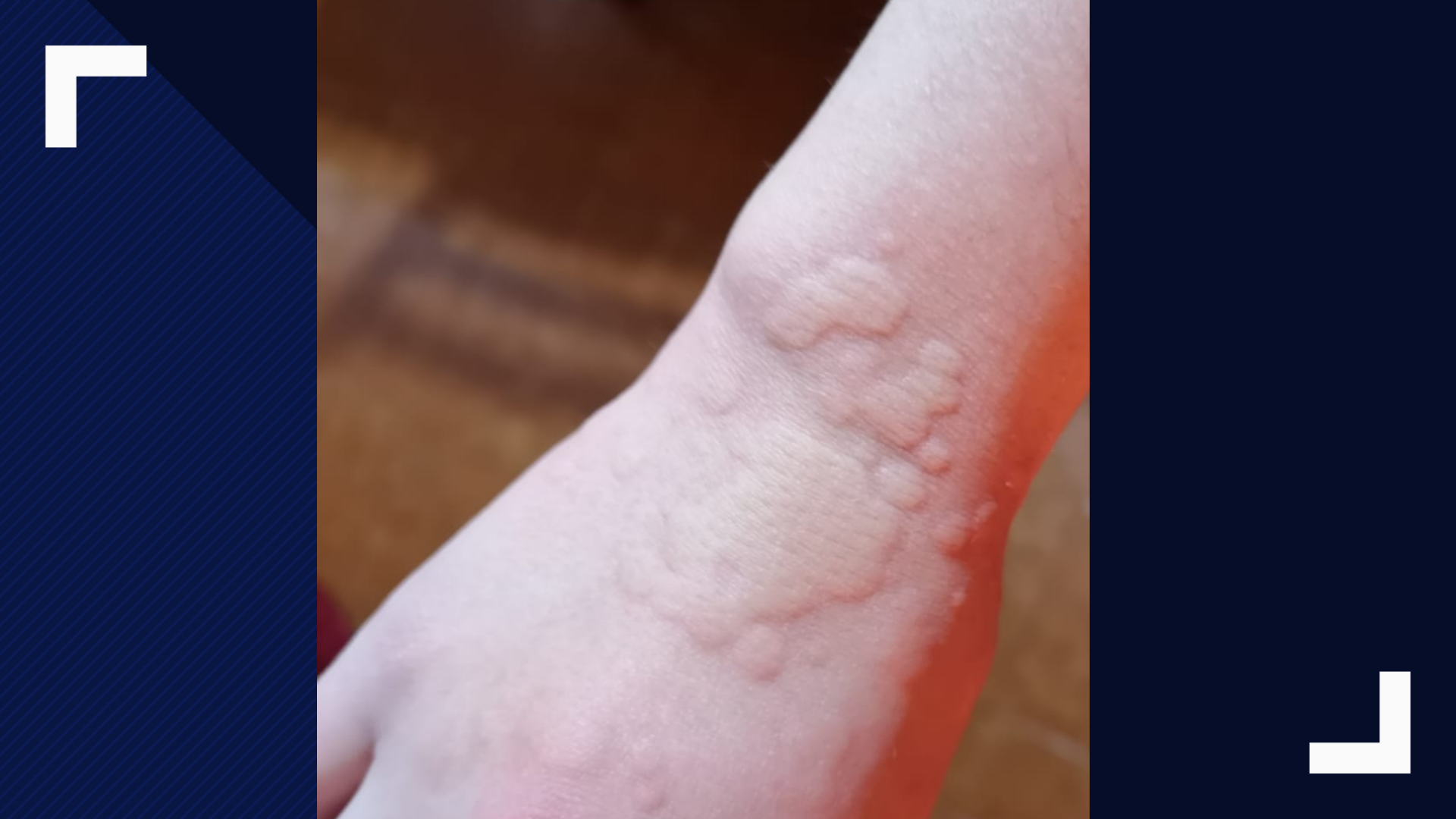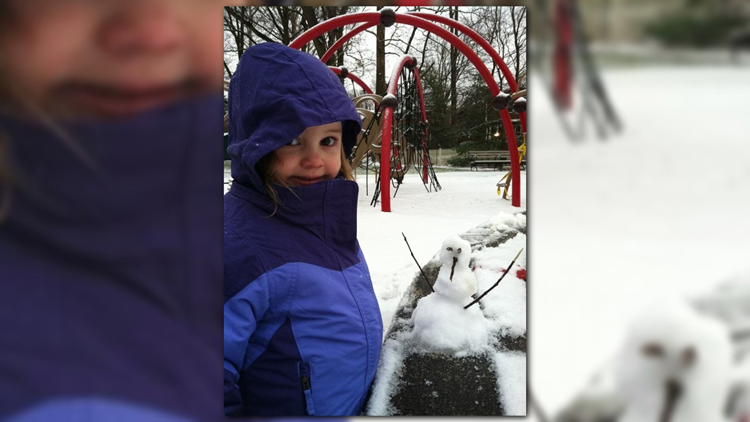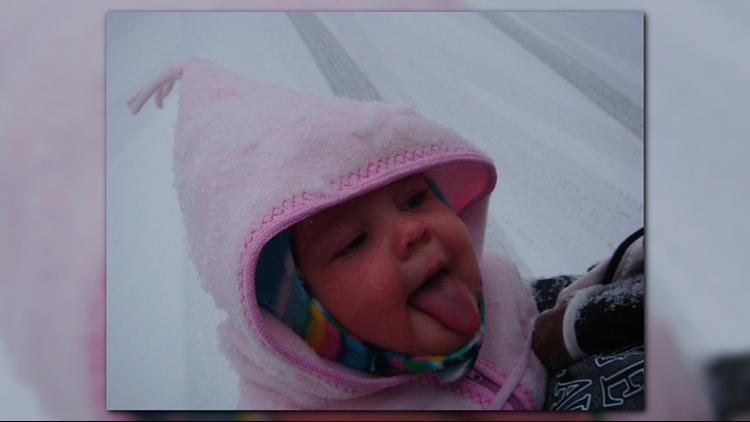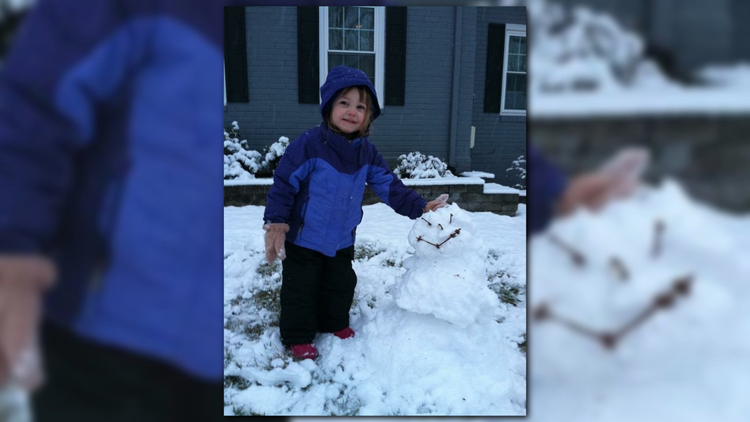WASHINGTON — Like any 8-year old kid, Riley loves snow days, but unlike other kids her age, playing outside too long can trigger welts the size of marbles.
Riley is allergic to the cold. Yes, that’s a thing.
Just a gust of wind can set off a bloom of red hives along her cheeks.

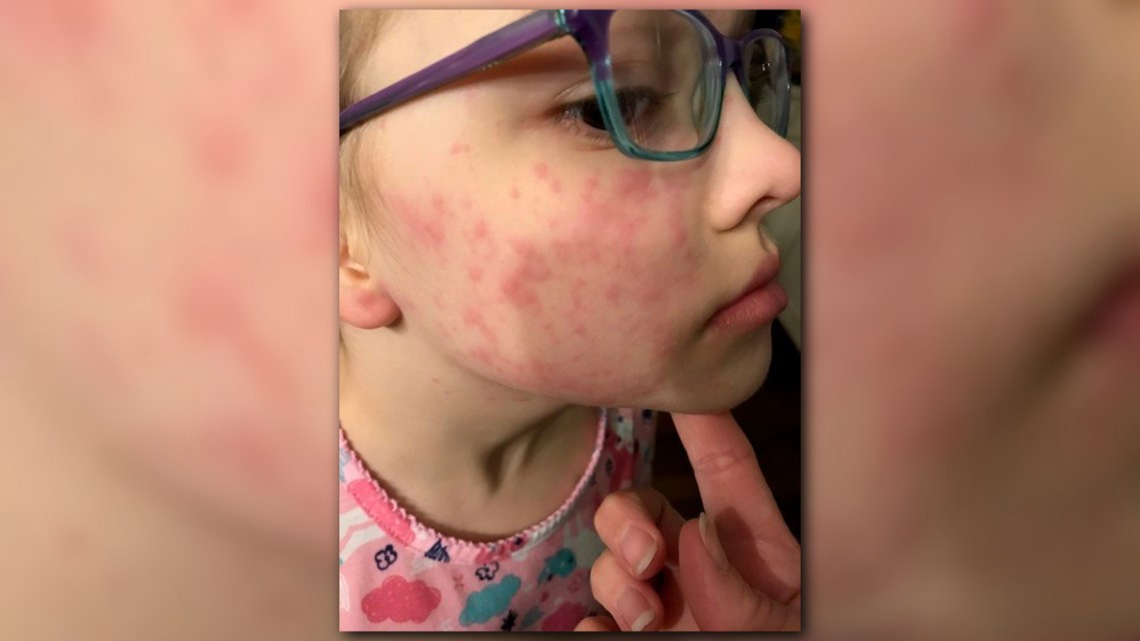
"Sometimes it's very mild and it doesn't itch at all," Riley said, bundled in three layers in her 71-degree home in Arlington. "But last year, it was really bad because we didn’t know what to do so I was scratching all over."
Riley’s mom, Tamara McFarren, is a classic PTA mom: involved, organized and her daughter’s No. 1 fan.
"I would get an email from the teacher saying, 'She’s fine. She’s not itchy, but her face, there’s hives on her face from being outside,'" McFarren said.
She can't forget that warm summer afternoon in August 2017 when Riley broke out in hives for the first time.
"The summer camp had taken them to a water park and it was a beautiful 75-degree day," McFarren said. "There was a light breeze and the water from the sprays wasn't heated and they called me, and she had broken out into hives, just from the cold water."
Uncertainty filled the first three months leading up to Riley’s diagnosis.
"They did a lot of testing on everything that could be environmental," Riley's father Stuart McFarren said. "That took a lot of time to figure out that it wasn’t chlorine, dog dander, foods."
Less than 1 percent of people in the U.S. have this rare condition called Cold Urticaria, or "hives induced by contact with the cold."
PHOTOS: Think you’re having a bad winter? Try being allergic to the cold.
Rare allergies are actually more common than one may think. Solar Urticaria, or hives produced from contact with UV rays, and Exercise Urticaria, or hives produced with the spike of a person's internal temperature, are real.
But experts say many of these conditions are difficult to diagnose.
"We actually don’t know a lot about Cold Urticaria," said Dr. Andrew Kim, of Allergy & Asthma Centers in Lorton, Va. "It comes about spontaneously, and it goes away after about a few years, typically three to five years."
Riley’s allergy developed from an everyday cold, which snowballed into prolonged weeks of recurring hives. As a precautionary measure, Riley takes three antihistamines and wears three layers of clothes daily.
Allergists believe Riley could outgrow her condition by the time she’s 12.
Kim has not treated Riley but he has treated 10 patients with Cold Urticaria during his 10 years in Lorton, Va.
"The diagnostic test is the ice cube challenge," Kim said. "We simply take an ice cube on the forearm where it's very sensitive and then after a few minutes, we take the ice cube off and then as the skin gets warmed up there’s a good histamine response. Where the ice cube was placed, they get a hive."
Riley’s allergy is pretty moderate. Unlike others with the condition, Riley can eat mint chocolate chip ice cream, which is her favorite, drink cold water and, if she ever needed it, receive IV fluids.
But she has to take extra precautions when she does the one sport she loves most: swimming.
Every time Riley steps into the pool, she risks going into anaphylactic shock.
When it comes to Riley’s safety, her parents don’t mess around.
At every swim meet, at least one of them is armed with an EpiPen, should Riley ever need it.
But the third-grader penetrates the water with grace, unfazed, descending step by step, inch by inch, into the 70-degree pool. It takes 10 minutes adjusting to the brisk temperatures for Riley to completely acclimate and join her teammates.
Nothing holds her back.
"You can choose to let it define you, you can choose to never go outside again," Tamara McFarren said, "Or you can realize that you’re strong and you’re going to work through it. We’re incredibly proud of who she is."
Playing outside too long can trigger an allergic reaction
---
Becca Knier and Annie Yu contributed to this story.



